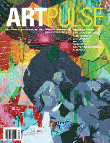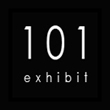« Reviews
Arctic Hysteria
Curated by Marketta Seppälä and Alanna Heiss
By Teresa Arroyo de la Cruz
There is widespread belief that in Finland people inhabiting remote northern landscapes and thousands of lakes and islands are calm, mellow and equally adaptable to the endless sun of the white nights of summer and the long weeks of darkness and sensory deprivation of winter. By the nineteenth century, however, ethnographers who explored the arctic countries spoke of the irrational behavior of the native people who, among other psychopathologies, drank uncontrollably for no apparent reason or disrobed and ran through the snow as if possessed until they fell to the ground completely exhausted….
“Arctic Hysteria,” an exhibition produced by FRAME and the PS1 MoMA of NY in collaboration with Salamanca’s DA2, stems precisely from these paradoxes. Inter-generational artists have created works on all kinds of supports under a series of common leitmotifs in an effort to demythify the cultural clichés associated with Nordic countries. One can observe the appearance of the irrational within daily life in the paintings of Stiina Saaristo, eccentric people obsessed by the paranormal in Veli Granö’s videos or the “hysterical” performances of the choreographer Reijo Kela. The clash between nature and culture is made manifest in the enormous photographs of natural landscapes that Ilka Halso has transformed into “thematic parks” using digital manipulation, in Anni Rapinoja’s “boutique” with its garments made out of flowers, leaves, roots and other elements of nature or in the delightful “philosophical hares” of Pekka Jylhä.
Some of the most exceptional works in this exposition analyze the failure of the science-fiction utopias of the nineteen sixties and seventies. Such is the case with the collection of videos and photographs assembled under the title The Future Is Not What It Used To Be (2002) by Mika Taanila and Erkki Kurenniemi or the terrifying installation Kursk (2004) by Markus Copper, which refers to the Russian nuclear submarine that sank in the Arctic Ocean in 2000 with its crew onboard.
The collision between public and private identity and a deeply rooted sense of community in a country that presumes to embody the benevolence of the welfare state better than anyone else can be seen in the video-installation 9 Easy Steps to Organize a Complaint Choir (2008) by Tellervo Kalleinen and Oliver Kochta-Kalleinen. It refers to the ludic-political power of collective action through the mise en scène of a “complaint choir,” a deeply rooted Finnish civic tradition. This can also be sensed in the The Screaming Men (2003) a documentary by Mika Ronkainen that, under an aesthetic reminiscent of the romantic painting of Gaspar D. Friedrich, depicts the preparation of a choir’s concert/performance in the midst of a desolate arctic landscape or in Salla Tykkä’s photographs and movies that focus on power relationships between the sexes.
In summary, we are in the presence of a collection of extreme and disconcerting offerings that, under the mantle of that indescribable “arctic hysteria,” question the commonly accepted clichés regarding Scandinavian society, culture and folklore. Over 50 years ago, the winner of the Nobel Prize in Literature, Marko Tapio, explained this phenomenon better than anyone else when he pointed out: “Arctic hysteria is not a disease. We don’t know what it really is … Every so often, an extreme phenomenon appears in that region … Its outbursts reach utmost extremes and no means of self-control can contain them …”
(March 30 - June 27, 2010)
Filed Under: Reviews



































